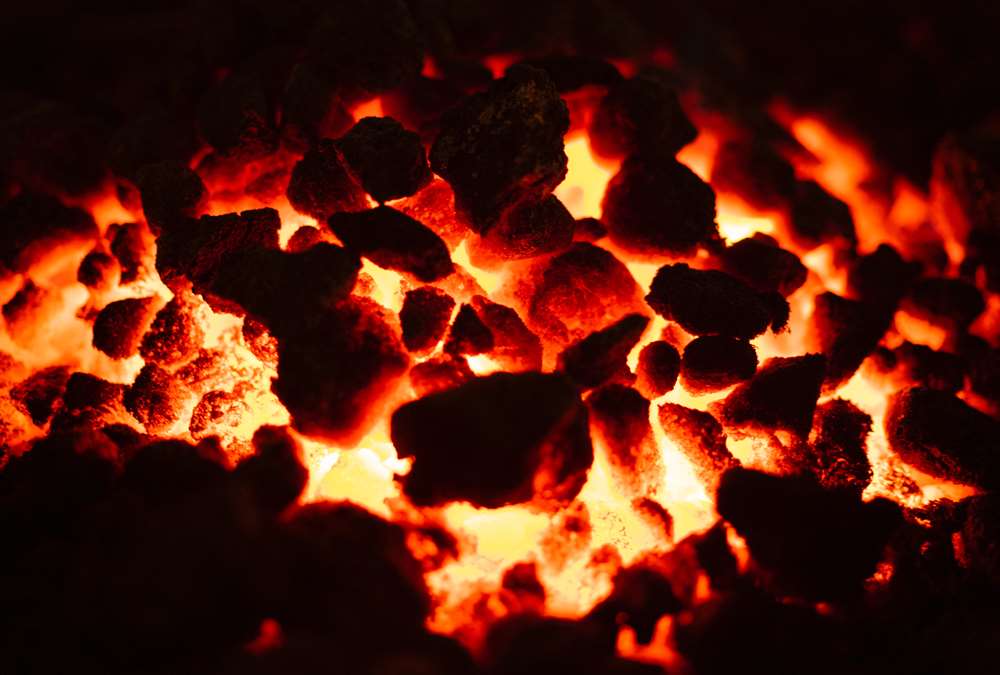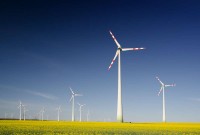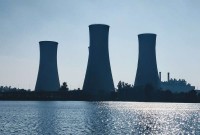- Home
- Business Processes
- Industry Knowledge
- Aerospace Industry
- Automotive Industry
- Banking Domain
- BFSI Industry
- Consumer/ FMCG Industry
- Chemicals Industry
- Engineering & Construction
- Energy Industry
- Education Domain
- Finance Domain
- Hospitality Domain
- Healthcare Industry
- Insurance Domain
- Retail Industry
- Travel and Tourism Domain
- Telecom Industry
- Leadership Skills
- eLearning
- Home
- Industry Knowledge
- Energy Industry
- Traditional Energy Industry
Traditional Energy Industry
This is the traditional industry based on the collection and distribution of firewood, the use of which, for cooking and heating, is particularly common in poorer countries. People have needed energy in some form for their everyday lives for hundreds of years. Primitive man (about 1 million years B.C.) used fire to cook food and over the period of human development. The energy industry was probably born the day when our ancient ancestors first discovered that they could keep themselves warm and cook food with fire.
Woodlands as Energy Source
Woodlands have been an essential resource for constructing homes, vehicles, ships, furniture, tools, and machines as well as for providing heat for households and cooking. Poor management of woodlands caused low productivity, and as timber stands became more remote, logging and transporting timber became less economical. During the 13th century in England, lime kilns devoured hundreds of ancient oaks in Wellington Forest. By the 1540s, the salt industry was forced to search far a field for the wood used in its processing furnaces. British naval power judged this shortage to be a national security threat. Authorities attempted to impose stiff fines for timber poaching and forbade bakers, brewers, and tile makers from purchasing boatloads of wood.
Severe timber shortages reached national crisis proportions in Britain, impelling the import of expensive timber from the Baltic and North America. Native turf, peat, reeds, gorse, and other plant fuels simply could not provide adequate supplementation.
Wind & Water Energy
Windmills were developed in Persia by the 9th century BCE. This technological innovation was spurred by the need to mill corn in areas lacking consistent water supplies. Early windmills used an upright shaft, rather than a horizontal one, to hold the blades. This system was housed in a vertical adobe tunnel with flues to catch the wind (similar to a revolving door). The concept of harnessing wind energy via windmills reached Britain and Europe by 1137, where it underwent significant changes, with horizontal (rather than vertical) shafts and horizontal rotation. A form of solar energy, climate-dependent wind power has been unreliable and difficult to accumulate and store.
Roman aqueducts provided a system of fast-flowing water to watermills. By the 1st century BCE, Romans used an efficient horizontal axis where the waterwheel converted rotary motion around a horizontal axis into motion around a vertical axis; water passed under the wheel, and kinetic water energy turned the wheel. Draft animals and waterpower were harnessed to turn millstones. Rudimentary primitive watermills used vertical axes, with millstones mounted directly to waterwheel shafts. In mountainous regions, water was channeled through a chute into the wheel. Although power output was minimal (B300 W), this type of watermill was used in Europe until the late medieval period.
During the late 18th and early 19th centuries, waterwheel efficiency was improved. English engineer John Smeaton, expanding on the systems of early Roman waterwheels; found that more energy was generated when water was delivered to the top of the wheel via a chute. An overshot waterwheel used both kinetic and potential water energy and was capable of harnessing 63% more potential energy than was the undershot. The growing demand for energy intensified the use of the waterwheel. While toiling in the gold mines of California during the 1870s, a British mining engineer, Lester Pelton, discovered that a waterwheel could be made more powerful if high-pressure jets of water were directed into hemispherical cups placed around its circumference. This waterwheel design, generating 500 horsepower (HP), was used 20 years later in the sodden mines of Alaska.
Coal as Energy Source
Over the years, as humans became more sophisticated they learned how to burn coal for energy needs. Coal was available in plenty and it burned well. Coal producers were, therefore, one of the first entrants to the energy industry. During the Middle Ages, people began to understand that water could be used as a source of energy. Hydropower was used in ships and bridges and later the first hydraulic engineers developed large water wheels and eventually it led to the building of hydropower dams. By the 18th century, humans realized that steam could be a valuable fuel source. Steam power spread quickly as most steam engines required coal and coal was plentiful in most locations.
Population growth and competition for resources have continuously been an impetus for the control and use of energy. In harnessing energy, inventions evolved from previous innovations, ebbing and flowing with changes in population pressures and the availability of resources—necessity shaping history. For millennia, societies depended on resources provided by solar energy (radiation stored as vegetation), wind (a type of solar energy), animal and human energy, water, and fossil fuels. The advent of mechanized labor and its synchronized production demands transformed the lives of workers previously tuned to seasonal energy rhythms. Technological innovations during the early 18th century resulted in enormous growth in the economic wealth and sociopolitical power of nation-states.
Sustained growth in Western Europe and Britain spread via exploration and trade. The competition to colonize and control the raw natural resources in the Caribbean and the Americas, in conjunction with imperialism in Indochina, the Mideast, and the Mediterranean, changed the global energy map.
Electric Power
The energy industry evolved over many centuries, over a period of time, our sources of energy have evolved, and the technologies we use to generate, distribute, and deliver energy have changed dramatically. Early days of the Industrial Revolution, coal and steam were the primary sources of energy for most factories and industrial users. The invention of electricity in the late 19th century launched a new sector of the energy industry. Electric power plants began to be constructed across the country, and coal quickly became the fuel source of choice for generating plants and remained preference till the 21st century.
Hunting man (Europe approximately 100,000 years ago) had more food and also burned wood for heat and cooking.
Primitive agricultural man (Fertile Crescent in 5000 BC) grew crops and used animal energy.
Advanced agricultural man (northeast Europe in 1400 AD) had coal for heating, water power, wind power, and animal transport.
Industrial man (in England in 1875) had the steam engine.
Technological man (in the United States in 1970) consumed 230,000 kcal/day.
Primitive man (East Africa approximately 1 million years ago), without the use of fire, had only the energy of the food he ate (2000 kcal/day).
Biomass Production
Biomass production involves using garbage or other renewable resources such as corn or other vegetation to generate electricity. When garbage decomposes, the methane produced is captured in pipes and later burned to produce electricity. Vegetation and wood can be burned directly to generate energy, like fossil fuels, or processed to form alcohols.
Related Links
You May Also Like
-
Most of the energy we use today is being obtained from coal and petroleum. There are some sources of energy, which can be used repeatedly without exhausting them, such as, energy from the sun, energy from a water-fall, wind energy, tidal energy. This industry comprises of alternative energy and sustainable energy companies, including those involved in hydroelectric power, wind power, and solar power generation, and the manufacture, distribution, and sale of alternative fuels.
-
The modern electric power industry covers the generation, transmission, distribution, and sale of electric power to the general public and industry. The commercial distribution of electric power started in 1882 when electricity was produced for electric lighting. In the 1880s and 1890s, growing economic and safety concerns lead to the regulation of the industry. What was once an expensive novelty limited to the most densely populated areas, reliable and economical electric power has become an essential aspect for normal operation of all elements of developed economies!
-
This is the traditional industry based on the collection and distribution of firewood, the use of which, for cooking and heating, is particularly common in poorer countries. People have needed energy in some form for their everyday lives for hundreds of years. Primitive man (about 1 million years B.C.) used fire to cook food and over the period of human development. The energy industry was probably born the day when our ancient ancestors first discovered that they could keep themselves warm and cook food with fire.
-
Energy is essential to life and the key to human progress. Energy is the common link between the living and non-living realms of the universe, and thus provides an organizing intellectual theme for diverse disciplines. Energy growth is directly linked to well-being and prosperity across the globe. Meeting the growing demand for energy in a safe and environmentally responsible manner is a key challenge.
-
The history of human culture can be viewed as the progressive development of new energy sources. Developments in the energy industry have resulted in unparalleled transformations of society. It is because of the availability of energy sources that humans have been able to increase comfort, longevity, and affluence, as well as their population apart from unprecedented growth. Each energy fuel alternative has also impacted different combinations of economic, political, technological, social, and environmental attributes.
-
Nuclear power is the use of sustained nuclear fission to generate heat and electricity. Nuclear power plants provide about 6% of the world's energy and 13–14% of the world's electricity, with the U.S., France, and Japan together accounting for about 50% of nuclear-generated electricity. In 2007, the IAEA reported there were 439 nuclear power reactors in operation in the world, operating in 31 countries.
-
The energy industry is going through the biggest transformation in history. The impact of energy production and consumption on the environment is varied and mankind has started understanding the importance of improving energy efficiency and ensuring energy security for all. The current trend is to explore sustainable energy options that can provide power to future generations.
-
The energy is comprised of companies involved in the exploration and development of oil or gas reserves, drilling, and refining and integrated power companies working on renewable and coal energy. This industry locates fuel resources, processes them, and finally involved in the production and sale of energy. Access to affordable energy is fundamental to human development, and economic growth as without electricity and power, human opportunities are significantly constrained.
-
These industries include petroleum industries (oil companies, petroleum refiners, fuel transport and end-user sales at gas stations) coal industries (extraction and processing), and the natural gas industries (natural gas extraction, and coal gas manufacture, as well as distribution and sales). Most of the energy we use today is being obtained from coal and petroleum. We also have nuclear power plants. But these energy sources are limited as only finite quantities of coal; petroleum and gas exist underground or in oceans.
Explore Our Free Training Articles or
Sign Up to Start With Our eLearning Courses

About Us
Learning
© 2023 TechnoFunc, All Rights Reserved









